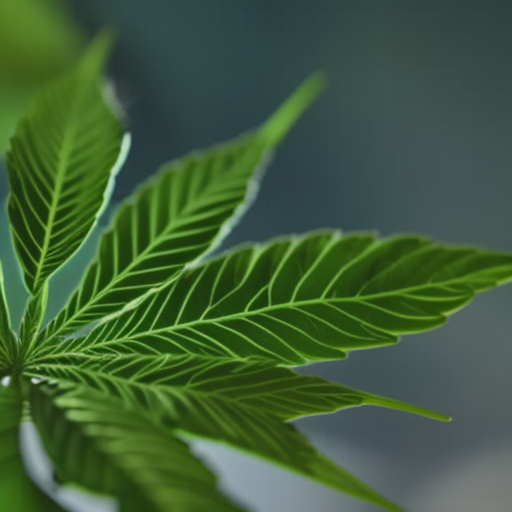
The burgeoning field of medical cannabis research has shed light on an intricate biochemical landscape that extends far beyond the well-known cannabinoids such as tetrahydrocannabinol (THC) and cannabidiol (CBD). A pivotal component of this landscape is the class of aromatic compounds known as terpenes. These organic hydrocarbons, responsible for the distinct scents of various botanicals, are increasingly recognized for their potential therapeutic properties, particularly in conjunction with the endocannabinoid system (ECS). Terpenes not only contribute to the olfactory profile of cannabis but also modulate its pharmacological effects, raising questions about their role in optimizing therapeutic outcomes for patients.
Terpenes are produced in the glandular trichomes of cannabis plants, where they coalesce with cannabinoids to form a complex chemical matrix. This synergy between terpenes and cannabinoids is often referred to as the “entourage effect,” a concept positing that the therapeutic efficacy of cannabis is enhanced when multiple components work synergistically rather than in isolation. Research has shown that terpenes can influence various physiological mechanisms, including modulation of inflammatory pathways, anxiety, and pain perception.
One of the most prevalent terpenes in cannabis is myrcene, which is characterized by an earthy, herbal aroma reminiscent of cloves and hops. Myrcene has garnered attention for its sedative properties and potential to facilitate the relaxation response, making it a prime candidate for the alleviation of insomnia and chronic pain conditions. Studies have suggested that myrcene may enhance the permeability of cell membranes, potentially increasing the bioavailability of cannabinoids and augmenting their efficacy.
Another notable terpene, limonene, is responsible for the citrusy scent found in strains like Lemon Haze and Do-Si-Dos. Limonene has been investigated for its anxiolytic and mood-enhancing properties, showing promise in reducing symptoms of anxiety and depression. Furthermore, preliminary studies have indicated that limonene may possess anti-cancer properties by promoting autophagy and inhibiting tumor growth, signaling a need for more in-depth research into its therapeutic capabilities.
Caryophyllene, the only terpene known to also function as a cannabinoid, acts upon the cannabinoid receptor type 2 (CB2), which plays a critical role in modulating the immune response and inflammation. The peppery scent of this terpene is predominantly found in strains such as Bubba Kush and GSC (formerly known as Girl Scout Cookies). Its ability to bind to the CB2 receptor suggests a unique mechanism where caryophyllene can provide anti-inflammatory effects, potentially aiding conditions like arthritis and inflammatory bowel disease.
Pinene, another terpenoid of interest, is characterized by its pine-like aroma and is associated with cognitive enhancement and improved alertness. It has been posited that pinene may counteract some of the short-term memory impairment associated with THC, thus providing a balanced experience for patients using high-THC strains. Moreover, pinene exhibits potential bronchodilator effects, making it a candidate for respiratory conditions such as asthma.
Furthermore, the terpene linalool, famed for its lavender-like scent, has shown promise in promoting relaxation and reducing anxiety levels. Its anxiolytic properties are believed to stem from its ability to modulate GABAergic activity, which is essential in managing stress-related disorders.
While the presence of terpenes in raw cannabis is well-documented, the impact of processing methods on terpene retention must be considered. For example, during the vaporization of cannabis concentrates, terpene profiles can be altered significantly, losing some of the nuanced therapeutic effects they provide. This has led to a trend where manufacturers reintroduce terpenes into products post-processing to retain the full spectrum of potential benefits.
For patients seeking to optimize their cannabis experience, understanding the terpene profile of strains becomes paramount. As the medical marijuana landscape continues to evolve, there is an imperative for more comprehensive labeling practices that include terpene content. Such transparency would empower patients and clinicians alike to make informed decisions regarding strain selection tailored to specific therapeutic needs.
In summation, terpenes represent a critical yet often overlooked component of the medical cannabis therapeutic arsenal. Their diverse range of aromas and physiological effects warrants further investigation into their individual and synergistic roles in patient care. By embracing the complexity of the cannabis plant and its constituents, healthcare providers can better tailor treatments to enhance the quality of life for patients navigating a myriad of health challenges. Ultimately, the integration of terpene knowledge into clinical practice holds the potential to revolutionize the efficacy of medical cannabis as a therapeutic modality.

